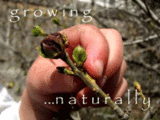So – what have we learned from the challenge so far?
Meal planning! So easy and such a great tool both in terms of food waste reduction, eating healthier, more organic, locally, more vegetarian/vegan…. Generally seeing the whole picture and getting an overview of our diet. And of course it’s a good tool when it comes to budgets and grocery shopping as well.
Composting. I know this challenge is about reducing food waste as much as possible. But I have to say, although I agree on keeping it to a minimum, I don’t feel all that bad about the food waste we give our rabbits or even what ends up in the compost pile. Because what ends up in both those places finally comes back as food on our table. That’s what it’s all about - keeping the energy in the system as much and as long as possible. And it does not contribute much to CO2 emissions or keeping people starving someplace in Africa.
What kind of food gets thrown out in our house? Mostly its stuff that comes in big jars or packs. And mostly it’s stuff bought on impulse (big lesson there. Meal plan!). Big jars of fancy sauces, olives, pickles, dressings and “economy”/budget size packets of cooked meats and sandwich spreads. No one seems to fancy the five olives left in a slightly murky jar in the back of the fridge. This can be changed of course – I could use the five olives when I make pasta sauce or something. It just *almost* never happens. Speaking of pasta; it’s another thing that gets thrown out now and then. Somehow we can never manage to cook the right amount of pasta – it’s too little or way too much. And the last thing is mostly bread and vegetable scraps. The rabbits eat most of it.
Another thing I’ve been thinking about is buying more locally produced food. With our climate this isn’t always easy, and definitely requires planning. We can produce quite a lot in this garden. Preserving; canning, drying, making jams etc. And storing; fresh potatoes, carrots, pumpkins etc. And there’s no problem getting local produce (or at least made in Norway) during the summer - buying in bulk and storing in a cold room in the basement. One of the most difficult things is fruits. We love fruit. And it’s so much better then feeding your child sweetened biscuits and candy. Locally produced fruit is difficult to find; it’s mostly apples and maybe some pears and berries. What to do if we’re going to stop buying bananas, oranges and grapes from faraway places? (Because we should – shouldn’t we really?)
2/26/2009
Subscribe to:
Post Comments (Atom)















No comments:
Post a Comment